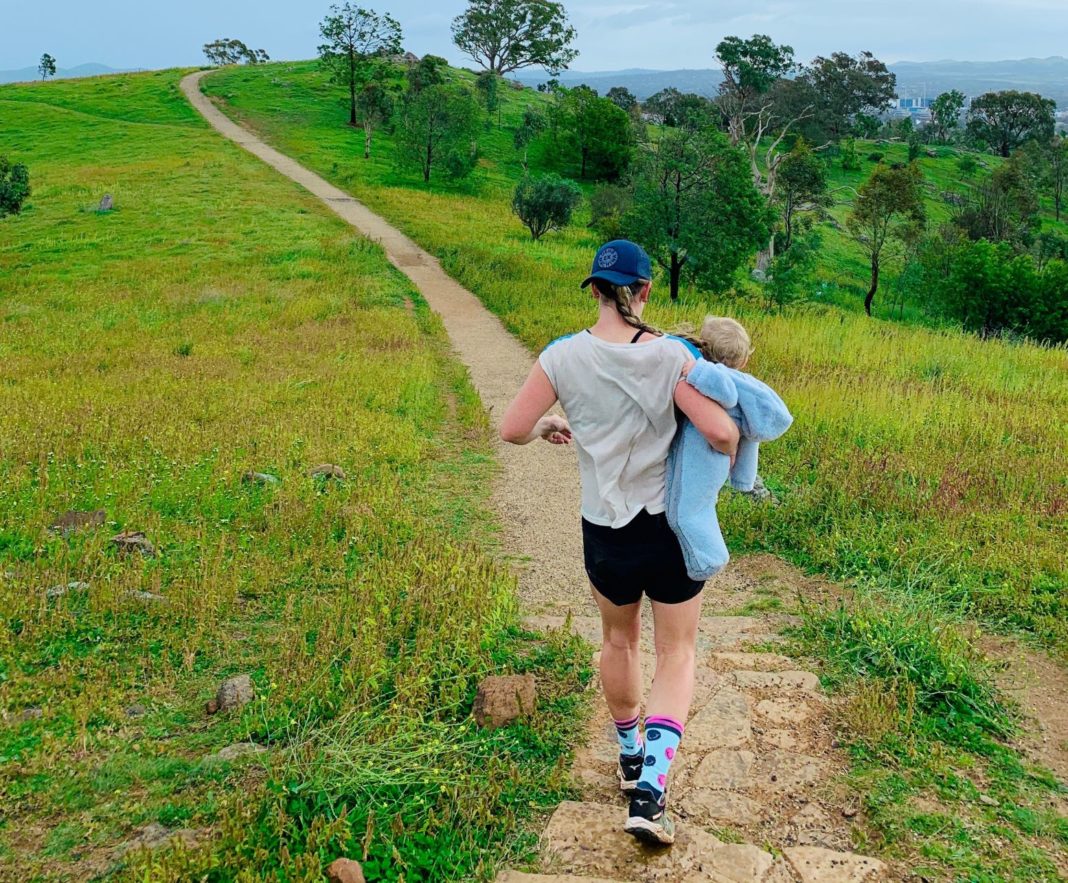Local Exercise Physiologist, Kirra Rankin, offers great advice for those who find they’ve been walking a lot more since health restrictions around COVID-19 temporarily closed many fitness facilities and put boot camps on hold. Even though these restrictions are starting to be eased, you might want to continue walking regularly as a free, convenient and uplifting fitness activity. Here are Kirra’s top tips for how to stay injury-free while stepping out.
Have you increased your walking?
We’re all doing it. But are our bodies prepared for the extra load? None of us were prepared for this isolation!
I’m predicting in four to six weeks, many people might be experiencing: foot pain; shin splints; hip bursitis; sciatic pain; lower back pain.
To avoid this, each week try to increase your walking by 10%-20% – not 120%. It’s called progressive overload, which is a method of strength training that advocates for the gradual (I emphasise gradual!) increase of the stress placed upon the nervous and musculoskeletal system.
If you’re fit and healthy, and used to going to the gym four times a week, then climb as many mountains as your heart desires. If you’re undertrained, it’s okay as a one-off to climb a mountain or two. However, if you’re doing it regularly, every week, for months – this is where injuries start.
Prevention is key.
Here are four tips to consider if you want to increase your walking routine:
1. Footwear management
Make sure you have supportive comfortable footwear. If you’re strolling in the local streets and getting some fresh air, pop on your walking/running shoes – not the ugg boots or thongs!
If you have another pair of good walking shoes, rotate them.
2. Choose your surface wisely
Don’t walk on a hard surface all the time. Mix it up with footpath, local soft grassy oval, single trail, rocks, gravel and tan bark. Each surface will distribute a different load on your joints and musculoskeletal system.
3. Rest days or ‘active recovery day’
Listen to your body. Your body adapts to the new loads when you’re resting. A rest day doesn’t mean hang out on the couch all day. Best way to recover and adapt to the new load is by scheduling an active recovery day, such as:
- flat easy short walks
- YouTube a home mobility session
- online yoga, Pilates.
4. Specific lower limb strength exercises
In order to prevent walking injuries, we need strength. Here’s a simple, easy and effective strength workout for you – the Canberra Daily Walking Strength Workout.
If you’re fit and healthy, do the 5 exercises with 10-12 repetitions, and 3 sets.
If your fitness needs nurturing, try for 6 repetitions, and 2 sets.
Aim for four to five days a week, after your walking routine.
- Lunges
- Single leg squats
- Hip extension
- Single leg calf raise (each leg)
- Hip flexion
You can print the PDF here.
Walking is the new 2020. Keep doing it, keep enjoying it – just be smart how you go about it.



